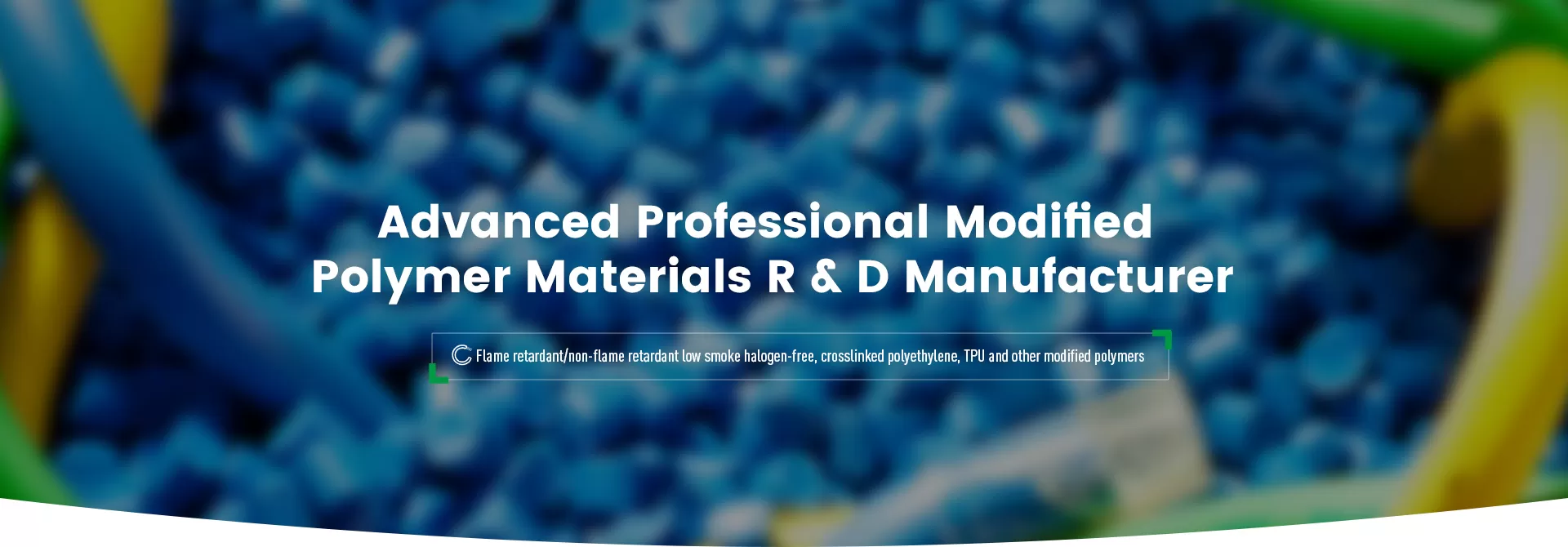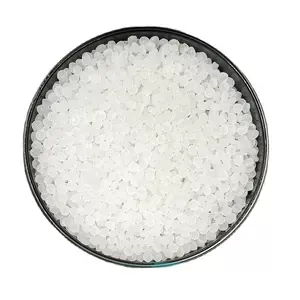

The UV-crosslinked polyethylene insulation material series products are mainly made of polyethylene as raw material, with photoinitiators, crosslinkers, antioxidants, and processing aids added, and are made by twin-screw extrusion and granulation. These products have excellent mechanical properties and strong resistance to environmental stress cracking; they are easy to process and have a fine and smooth surface.
The high density polyethylene HDPE base material, with its enhanced physical properties, contributes significantly to the robustness of the final crosslinked material. The molecular weight of the polyethylene chains in HDPE is higher compared to low-density polyethylene, contributing to superior strength, rigidity, and resistance to wear and tear. These qualities make HDPE a preferred choice for cables requiring excellent mechanical properties and high-performance insulation.
The products reach the crosslinked state after being irradiated by LED UV crosslinking equipment in the molten state, which fully complies with the JB/T10437-2004 standard. The UV crosslinking process ensures a uniform distribution of crosslinking points, creating a material with excellent thermal and electrical properties.
XLPE-UV cable insulation is a special type of crosslinked polyethylene (XLPE) that is irradiated with ultraviolet (UV) light during production to achieve better physical and chemical properties. This material is widely used in medium and high voltage power cables due to its excellent electrical, thermal, and mechanical properties.
The cross linking process is essential for creating the unique characteristics of XLPE, such as enhanced heat resistance, improved tensile strength, and greater environmental stress crack resistance. The operating temperatures of XLPE cables are extended significantly due to the network of crosslinked molecular structures, which improve the material's resistance to heat and chemical degradation, making it an ideal choice for demanding electrical applications.
To improve the physical properties of XLPE, physical entanglement can be increased by doping with low levels of polyolefin materials such as LLDPE (Linear Low-Density Polyethylene) or HDPE. This new XLPE insulation material has significantly improved mechanical properties at high temperatures, while the mechanical properties at room temperature are slightly improved. By adding HDPE, the physical properties of the XLPE insulation material are further enhanced, particularly its ability to resist wear and tear under harsh conditions. The molecular weight of HDPE contributes to the increased strength and stiffness of the insulation, which is especially important in cables exposed to external mechanical stresses.
The physical entanglement of the XLPE molecular chains can be increased, which, like the crosslinking points formed by chemical crosslinking, can enhance the mechanical properties of XLPE insulation. This improved mechanical performance ensures that XLPE cables are highly durable, flexible, and capable of withstanding external pressures. This also shows that it is possible to reduce the concentration of crosslinkers during the XLPE cable manufacturing process while maintaining electrical properties and improving mechanical properties at high temperatures.
In addition to providing excellent insulation for medium and high-voltage cables, cross-linked polyethylene (XLPE) materials are also resistant to moisture and environmental degradation. Their durability in extreme operating conditions is largely due to the crosslinking process, which enhances the physical strength and chemical resistance of the material, extending the lifespan of the cables.
The introduction of HDPE into XLPE not only reduces the cost of crosslinkers but also leads to improved operating temperatures and better chemical resistance, making the material ideal for use in cables operating in extreme environments. The enhanced molecular weight also allows the material to maintain its structural integrity at elevated temperatures, making it suitable for applications where high heat resistance is critical.
This innovation in XLPE technology, with the inclusion of HDPE or LLDPE, makes the insulation material even more versatile and reliable, further improving performance while maintaining cost-effectiveness in large-scale cable manufacturing. The continued development of cross linked polyethylene (XLPE) insulation will undoubtedly lead to more advanced and durable cable materials for a wide range of electrical applications.
| Test items | Test Methods | Unit | Typical Value |
| Tensile strength | GB/T1040 | MPa | 15.0-18.0 |
| Elongation at break | GB/T1040 | % | 480.0-610.0 |
| Heat aging test(135℃,168hr) | |||
| Maximum change rate of tensile strength | GB/T2951.2 | % | ﹣5~﹢10 |
| Maximum change rate of elongation at break | GB/T2951.2 | % | ﹣7~﹢12 |
| Thermal stretching(200±3)℃×15min×0.2MPa | |||
| Maximum elongation under load | GB/T2951.5 | % | 40.0-70.0 |
| Maximum permanent elongation after cooling | GB/T2951.5 | % | ﹣10~0 |
| Impact brittle temperature (-76℃) | GB 5470 | Pcs | 0/30 |
| Number of fractures/number of samples | |||
| Dielectric strength | GB/T1408.1 | MV/m | 39 |
| Dielectric loss factor 50Hz, 20℃ | GB 1409 | - | 0.5×10^-3 |
| Relative dielectric constant 50Hz, 20℃ | GB 1409 | - | 2.19 |
| Volume resistivity 20℃ | GB 1410 | Ω.m | 7.40×10^14 |